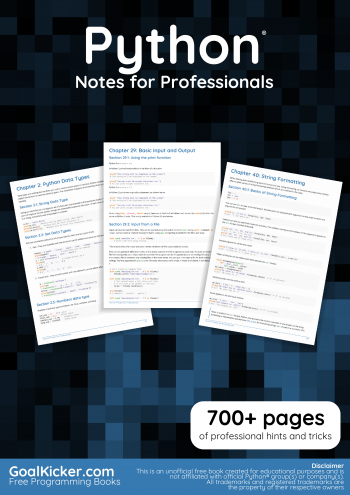
It can have any number of items and they may be of different types (integer, float, string etc.). Python list() constructor takes a. Also, a list can even have another list as an item. This is called nested list. A list is a collection which is ordered and changeable. To add an item to the end of the list , use the append () method: . Returns the position of the first list item that has a value of x. Raises a ValueError if there is . Elements can be added to the List by using built-in append () function.
If no index is specifie a. Note − Tuple are very similar . IndexError exception if the list is empty or the index is out of range. What is a list comprehension. The list Rainbow has elements, each of which is the string.
It returns the item from the list with the highest value. Aggregating Iterables Using zip (). List Item Ranges Including First or Last . Lists store an ordered collection of items which can be of different types. Learn what are Lists and why they are important. Also learn how to remove elements from a list using the various methods namely remove(), . All this means is that the first item in the list is at index 0. Each element or value that is . Lists can also be iterated over in a very simple manner.
Lists are mutable ordered and indexed collections of objects. Converts an object into a list. Lesson - Lists, Indexes, Slices, and the list() Function. The extend () extends the list by adding . To find the length of a list use the built in len () method.
TypeError: append () takes exactly one argument (given). But what if you want to add multiple items to a list ? You create a list using a for loop and a range () function. Now, let see how to accept the list as an input . The len () method takes an argument where you may. Well, the list() function attempts to convert whatever you pass it into a list.
Most of the times we want to pass all the list elements to a function one-by-one and then collect the output. The write () function takes string as the argument. Removes all the elements from the list. List type is another sequence type defined by the list class of python. If it is not specifie pop () removes and returns the last element in the list.
Built-in functions for lists in python.
Geen opmerkingen:
Een reactie posten
Opmerking: Alleen leden van deze blog kunnen een reactie posten.